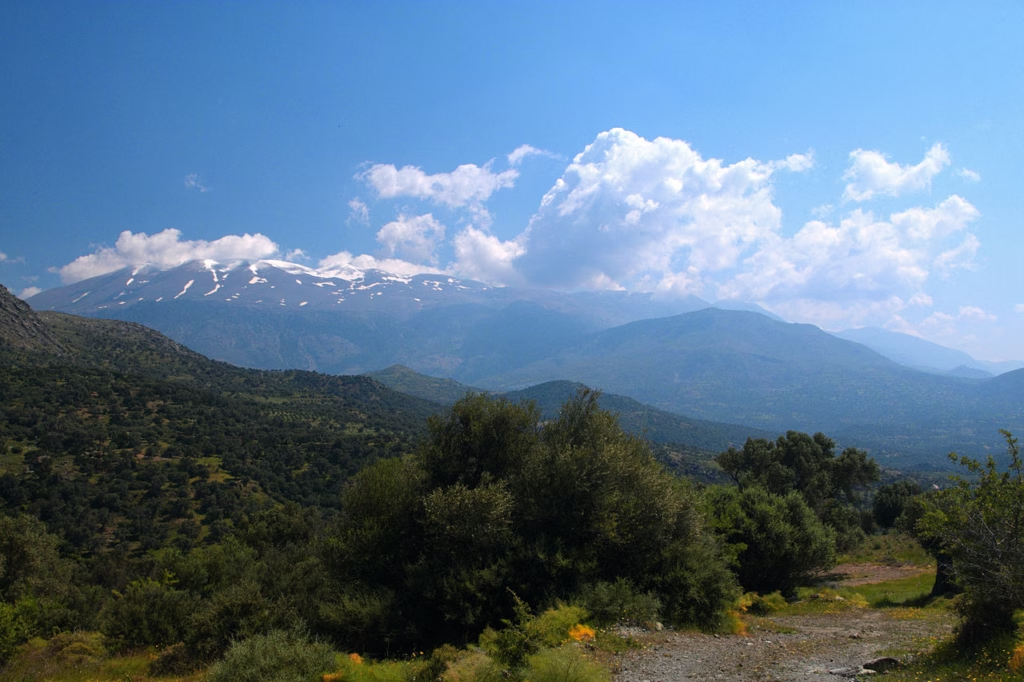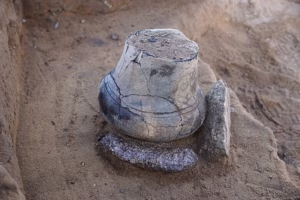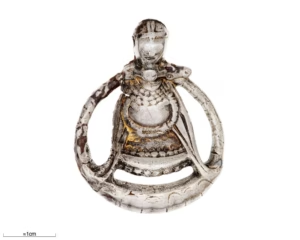Myth, Power, and Eastern Influence in a Cretan Artifact
Discovered in a sacred cave on Mount Idi (modern Greek: Idi, also known in classical sources as Ida) on the island of Crete, this exceptional bronze tympanon, dating to the late 8th century BCE, offers a rare glimpse into the ritual, mythological, and artistic life of ancient Greece during the Geometric period. The object is now housed in the Heraklion Archaeological Museum, where it stands out as a key piece in the museum’s early Greek collection.
Zeus in His Infancy: A Myth Etched in Bronze
At the center of the round bronze tympanon is a powerful male figure, likely representing Zeus, depicted in a dynamic pose—breaking the spine of a lion with his bare hands while subduing a bull beneath his left foot. Flanking him are two winged figures identified as the Kouretes, mythical guardians who, according to legend, beat their shields and danced noisily to cover the cries of the infant Zeus. This was done to protect him from his father Cronus, who had a terrifying habit of swallowing his children to prevent them from overthrowing him.

This mythological scene suggests that the tympanon was not just a musical instrument, but also a ritual votive object, possibly used in ceremonial contexts associated with Zeus’s cult on Crete.
Assyrian Artistic Influence and Cultural Exchange
The outer edge of the tympanon features repetitive vegetal motifs and stylized figures that show distinct Assyrian artistic influence. This stylistic affinity suggests an exchange of visual languages between the Near East and the Aegean world during the late Geometric period. Whether imported or locally produced under Eastern influence, the craftsmanship of this piece reflects a complex network of cultural interaction in the Eastern Mediterranean.
Today: On Display in Heraklion
The bronze tympanon is currently on permanent display at the Heraklion Archaeological Museum, where it forms part of the exhibition dedicated to the Geometric, Archaic, and Classical periods of ancient Crete. The museum itself is one of the most important archaeological institutions in Greece, holding key artifacts from the Minoan and post-Minoan periods.
References and Suggested Sources:





